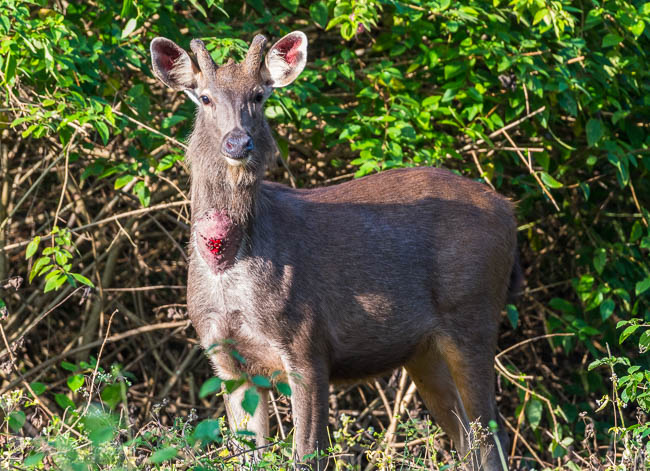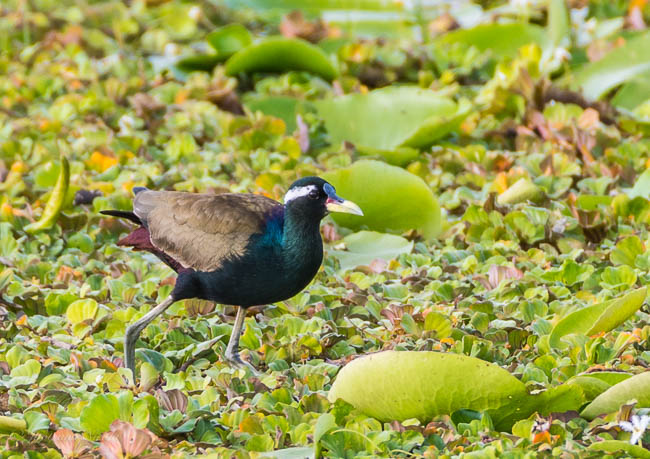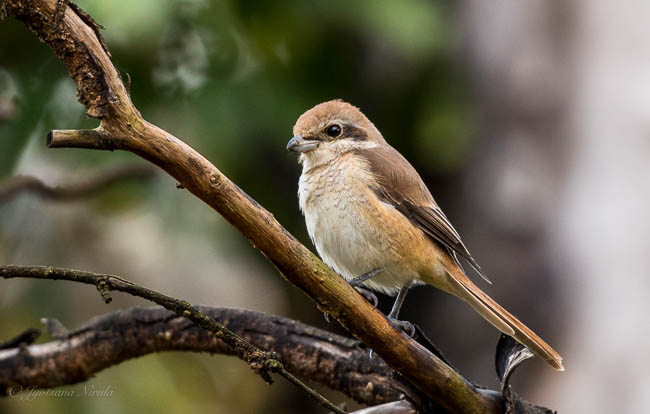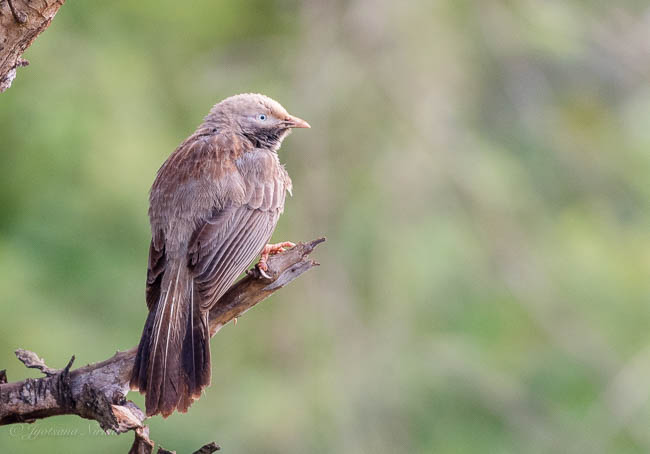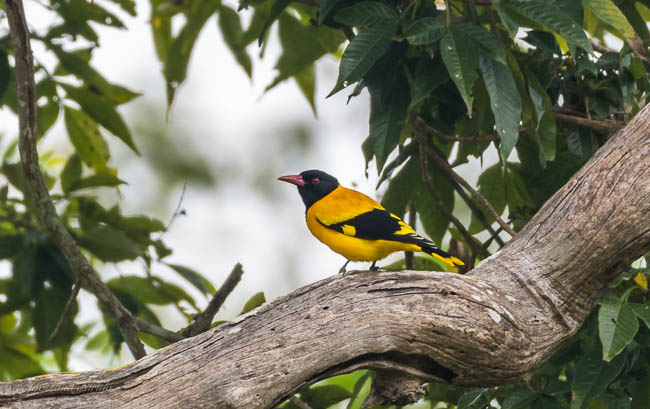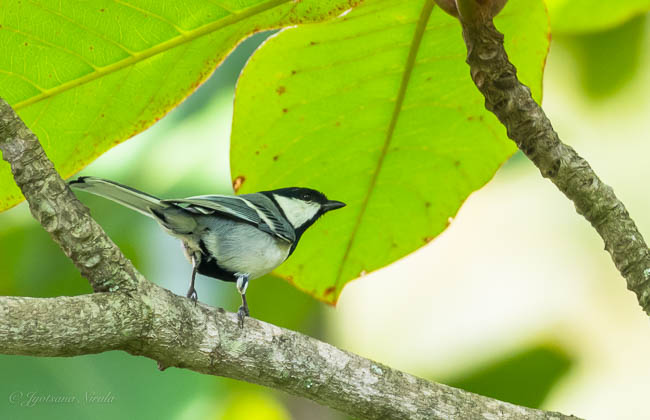A three-and-a-half-hour drive from Nagpur airport brought us to the Red Earth Resort, our home for three days near the Tadoba Andhari Tiger Reserve. The Tadoba Andhari Tiger Reserve falls under the Chandrapur district of Maharashtra, covering an area of around 600 sq.kms. There are also some buffer zones around the park, taking the entire area to about 1700 sq.kms. There are six gates to enter the park. Red Earth is located close to the Zari gate. We also did safari rides from the Moharli gate. This was in fact, our second trip to the park.

Indian PeacockThe
The first time was in the month of October a couple of years ago and this time was in March. One can clearly see the landscape dry out by March. As the summer gets intense, the forest dries up further, making sightings easier. Having said that, I personally feel forests are to be enjoyed in all their hues.

White-eyed Buzzard
This time around we had some interesting experiences. One of the most common sightings at Tadoba is the White-eyed Buzzard. You can see them perched or taking off from trees in front of you. The most distinctive feature of this bird is the white eye, hence the name.

Little Ringed Plover
Since we were at the trailing end of the winter migratory season for birds, we spotted some in the lakes that are scattered over the park. There were Northern Pintails, Greylag Geese, Spotted Redshanks and Temminck’s Stints. Lesser Whistling Ducks too, which are resident birds in most of the country. Our best sighting close to the lake was of the mating ritual of Little Ringed Plovers. They are small birds of around 14-17cms, with a bright yellow ring around the eyes in breeding season. The behavior was interesting to watch. The male bird strutted in short quick movements right behind the female, almost like the fast feet of a flamenco dancer!

Little Ringed Plover

Northern Pintails

Lesser Whistling Ducks
It is always tough to be able to sight Owls. We had pretty good luck this time. There was a Mottled Wood Owl pair close to one of the safari driveways. The female was settled in the crook of the tree, while the male was keeping watch from the other side, under the canopy of a small tree. Fortunately, the male was facing us so we could admire the beautiful facial disk and the brown barring on the underparts. The female on the other hand was resting with her back and part of the face visible to us. It was an opportunity to admire the rufous and mottled appearance. The bird was sleeping peacefully, eyes closed with a few insects resting on the eyelids! One of the upsides to bird watching in tiger reserves is that most people are there to watch tigers. Some jeeps stopped by to enquire what we were watching. Once told it was an Owl, they were off with a scoff in a jiffy, leaving us with time and space to admire these beautiful birds!


Mottled Wood Owl
While we were watching the Owls, we had another rare sighting…the Madras Tree Shrew! Probably one of the hardest to sight, leave alone photograph. It is shy, so quick on its feet, scurrying up and down fallen logs or dry leaves. The Tree Shrews seen in the central regions have a slightly rufous colouration on the back. They look like squirrels without stripes or whiskers!

Tree Shrew
Spotted Owlets are probably most commonly seen, usually nestled in tree holes or on early morning drives seen perched on branches. This time we were accidental watchers to a noisy display by the Owlets. The reason for this was not clear, though our guess is that some sort of territorial tussle was on. We had stopped at a checkpost inside the park. Right above us on a tree which was almost bereft of leaves, the Owlets were fluttering noisily from one branch to the other. Eyes fully open, with menacing expressions! Generally, one of the easier birds to photograph as they sit still for a long time but this time we could hardly keep up!

Spotted Owlet

Common Hawk Cuckoo
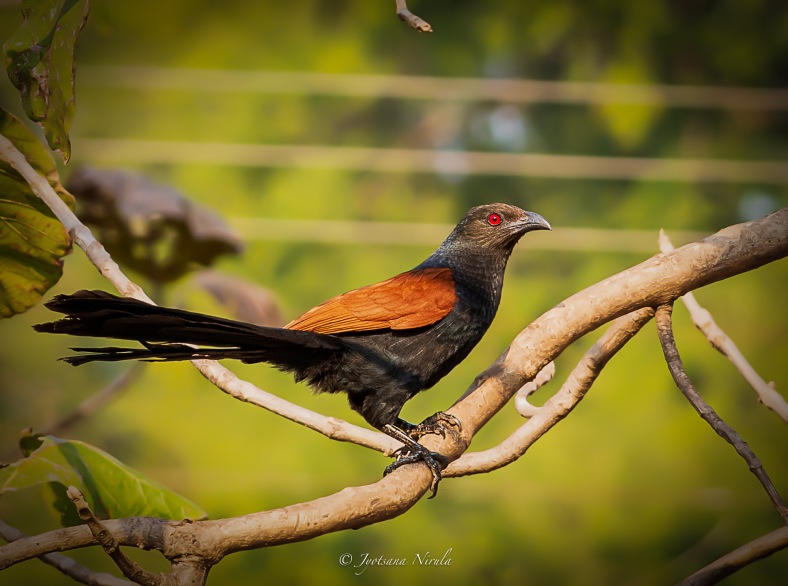
Southern Coucal
On one of the evening drives, on our way to exit the park, we came across a Peepal tree that was teeming with Yellow-footed Green Pigeons. There was a feeding frenzy on! They were making a racket, hopping about, pecking off the Peepal fruit as if this was the last fruit on offer!

Yellow-footed Green Pigeon
As we traversed one of the paths along a lake, we came across an Asian Openbill and Red-naped Ibis pair. There was also a Black Redstart moving about with its characteristic sideways flickering of the tail. A short distance down the road, after a chuckle at the notice board placed near the lake, we saw a bird swoop down and then quickly fly up to perch on a tree nearby. It was a male Shikra. The male Shikra has a bright red iris, which makes the identification easy. The eye colour stands out dramatically against the pale grey head colour. The female on the other hand has a yellow eye. We also had very good sightings of the Grey-headed Fish Eagle.

Asian Openbill

Shikra


Grey-headed Fish Eagle
On one of the days, we came across another jeep that said they had spotted a tiger near a waterhole not too far from where we were. We decided to go see if we could strike striped gold! We reached the spot. No tiger was in sight. Decided to wait a while. As minutes ticked by, there was no activity, till suddenly a bird darted into the water from a shrub near the edge of the water. It was the Asian Paradise Flycatcher! The waterhole came alive in a few seconds! A Tickell’s Blue Flycatcher came and perched on a small branch behind the jeep. Then a Red-breasted Flycatcher decided to fly to the top of the shrub, viewing us perhaps with amusement at our lack of luck in sighting a tiger! The waterhole was rechristened as the Flycatcher hole!

Tickell’s Blue Flycatcher

Red-breasted Flycatcher

Asian Paradise Flycatcher
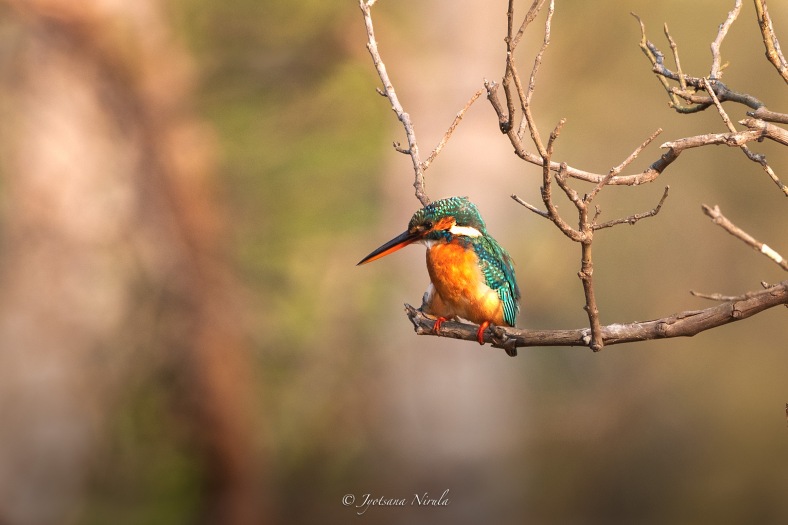
Common Kingfisher
One morning we were treated to a walk past by the Wild Dogs, also called Dholes. They usually hunt in packs which can be on average six to eight strong. This one was a pair. They seemed disinterested and quickly disappeared into the thicket.

Dhole
Early mornings are considered good for tiger sightings. We had barely gone some distance into the park one morning and we heard rustling of the dry bamboo leaves followed by a strong grunt. Stopping dead in our tracks, we all went quiet, the guides were up on their feet, scanning the bamboo with their expert eyesight. There were a couple of more loud roars from the big Cat! Behind the vehicle, some few meters away, some Peacocks and Gaurs came running out of the bamboo from one side, crossed the path and scrambled to the other side! The air was thick with anticipation. The guides were convinced the tiger had made a kill. We hung around there for sometime but all went quiet. We heard the next day, there was a sighting of a tigress that had killed a Gaur. Was it the same one?!!
We had taken two safari drives from the Moharli gate. It is the most popular entrance with, I believe, many resorts close by. Soon after we entered, our guide mentioned that the probability of sighting a tiger was high. Fingers crossed. Some distance into the drive we saw a couple of jeeps parked further up the road. The mind started to race faster than the jeep! As we got closer to the vehicles, the passengers in them pointed towards the bamboo. Tiger! He was sleeping, completely oblivious to the peeping Toms. No matter how many times you’ve seen a tiger, I promise you, you will never get tired of watching and admiring this creation of nature. Having taken some images, we started to discuss the family history of the tiger with the guide. He had been named Rudra. Interestingly we discovered that back in 2016, on our previous visit, we had likely seen him. At that time, he and his siblings, were referred to as the Shivanzari cubs, after their mother.

To my mind, one of the most interesting and at times amusing aspect of the safari drives is the reading of pug marks by the guides and the subsequent conversations around it. “Sir, yahan ka male hai – bahut bold hai, dikhega”, “Sir, ye toh female ke pug marks hai lekin woh shy hai – pucca andar chali gayi hogi”, “Ye toh waterhole se aaya hai”, “Ye toh seedha nikal gaya, ab aage cross karega, hamein uss waterhole pe milega”….you get the picture! They are undoubtedly skilled at tracking the animals and all these sentences have some logic behind them yet recounting these conversations is a source of a laugh or two around the bonfire in the evening after the safaris irrespective of whether you sight a tiger or not!!

Ruddy Mongoose
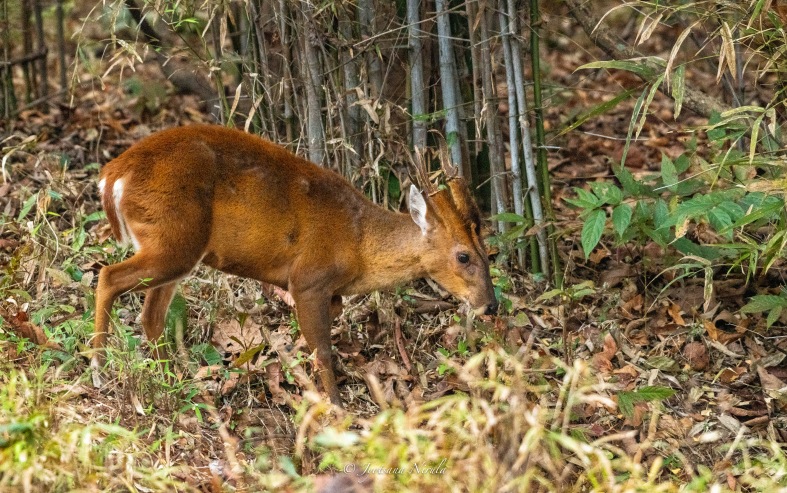
Barking Deer



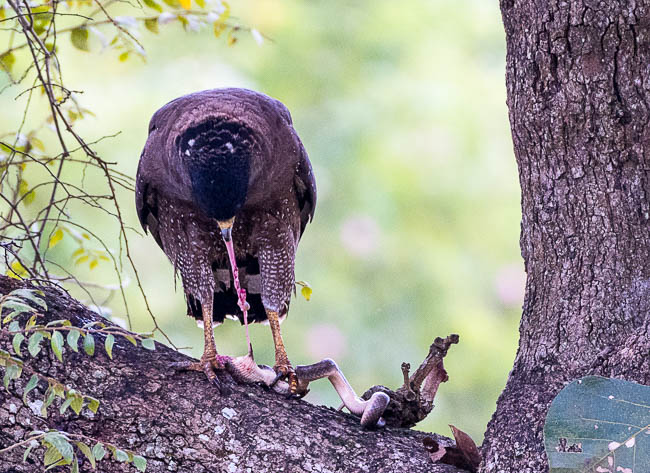


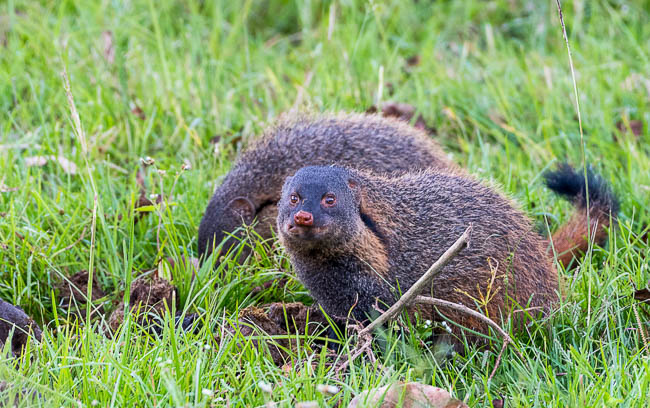
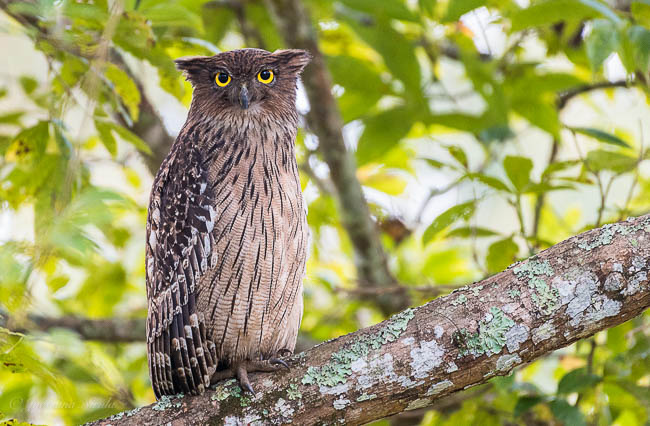
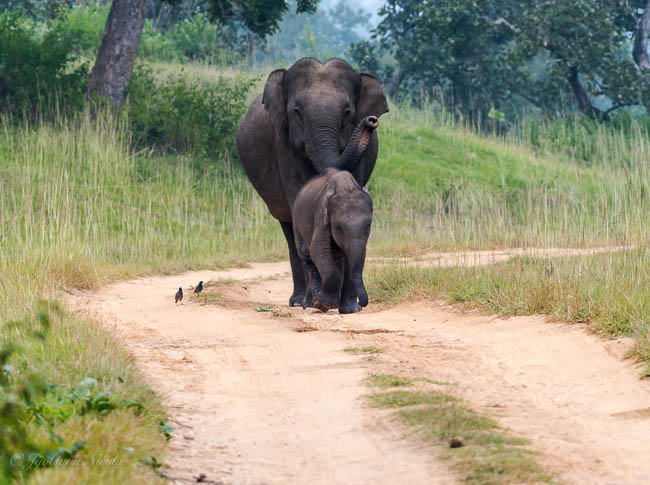
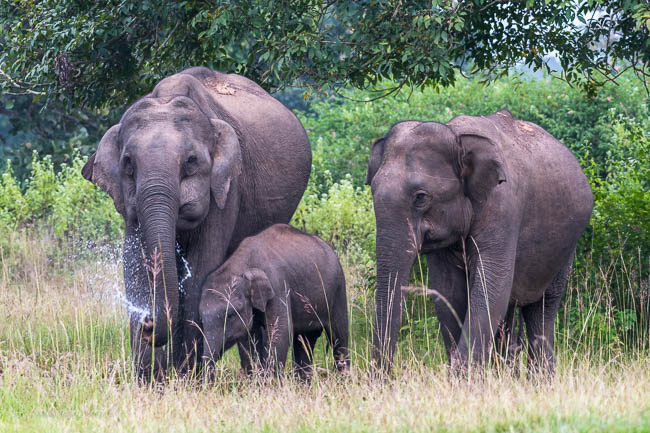
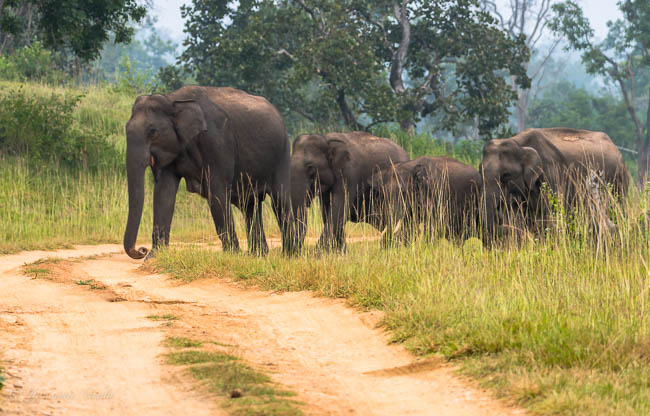 There is always something new to learn from nature. We observed some Sambar Deer had a bright red patch, a ‘sore spot’, on the neck. There seem to be various views on the reason or purpose of this patch. Since it occurs during the winter months of rut, there may be a possibility of the two being connected. It’s not an injury but probably a gland oozing fluid.
There is always something new to learn from nature. We observed some Sambar Deer had a bright red patch, a ‘sore spot’, on the neck. There seem to be various views on the reason or purpose of this patch. Since it occurs during the winter months of rut, there may be a possibility of the two being connected. It’s not an injury but probably a gland oozing fluid.